Why you can trust Tom's Hardware
To read about our monitor tests in-depth, please check out Display Testing Explained: How We Test Monitors and TVs. We cover Brightness and Contrast testing on page two.
Uncalibrated – Maximum Backlight Level
We have a variety of HDR monitors in the comparison group, covering a wide range of price points. There is the CV27Q’s cheaper brother, the Aorus CV27F, and ViewSonic’s Elite XG350R-C ultra-wide. Moving up the price scale are the Acer Predator XB273K and Acer Nitro XV273K. At the premium end is the Asus PG27UQ with a full-array backlight.
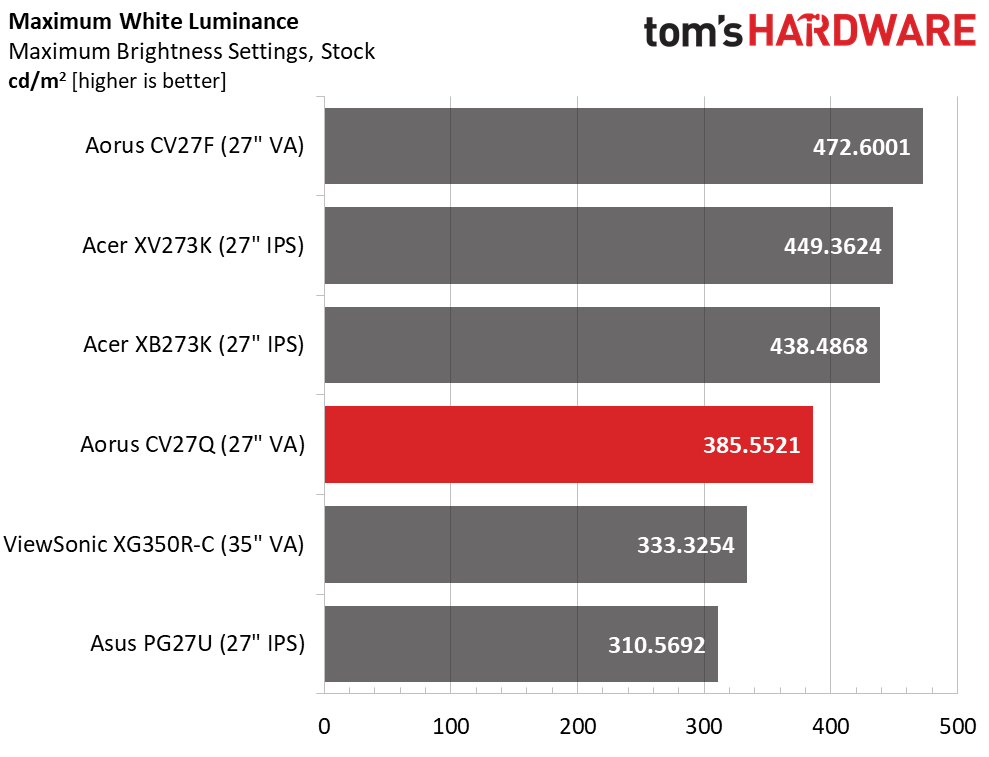

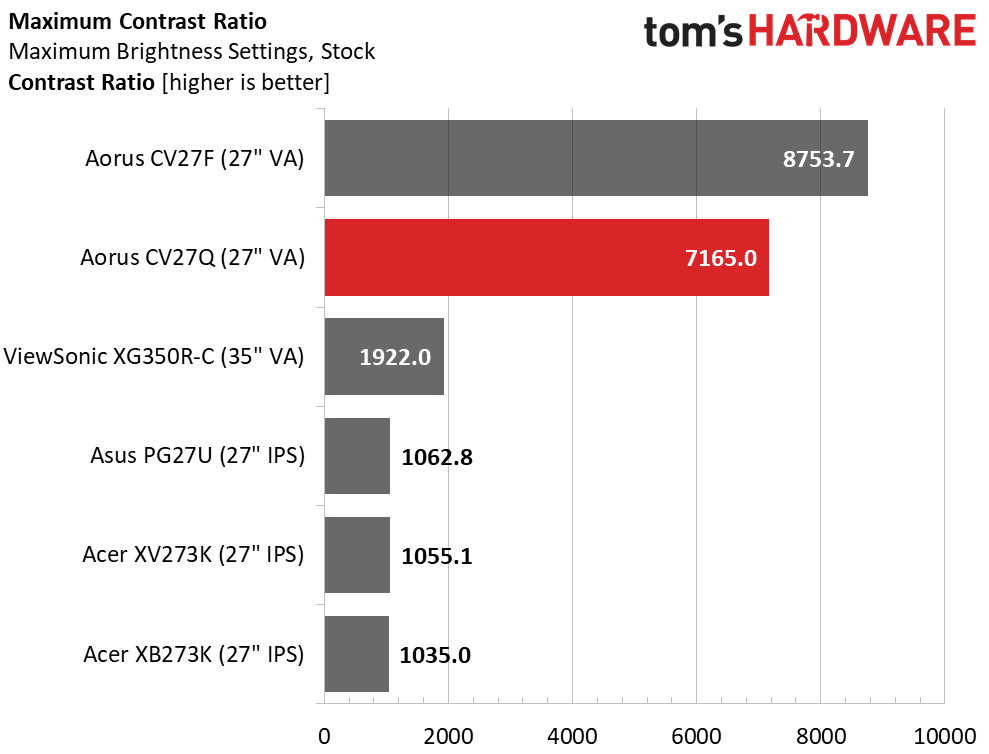
The CV27Q hits 385.6 nits brightness with SDR content, which is plenty for SDR content, even if you’re in a brightly-lit room. With a super-low black level of just 0.0538 nit, it achieved a remarkable contrast ratio of 7,165:1. Perhaps some sort of dynamic contrast feature is at work here even though that option was turned off in the OSD. You’ll see what we mean in the ANSI test below.
After Calibration to 200 nits
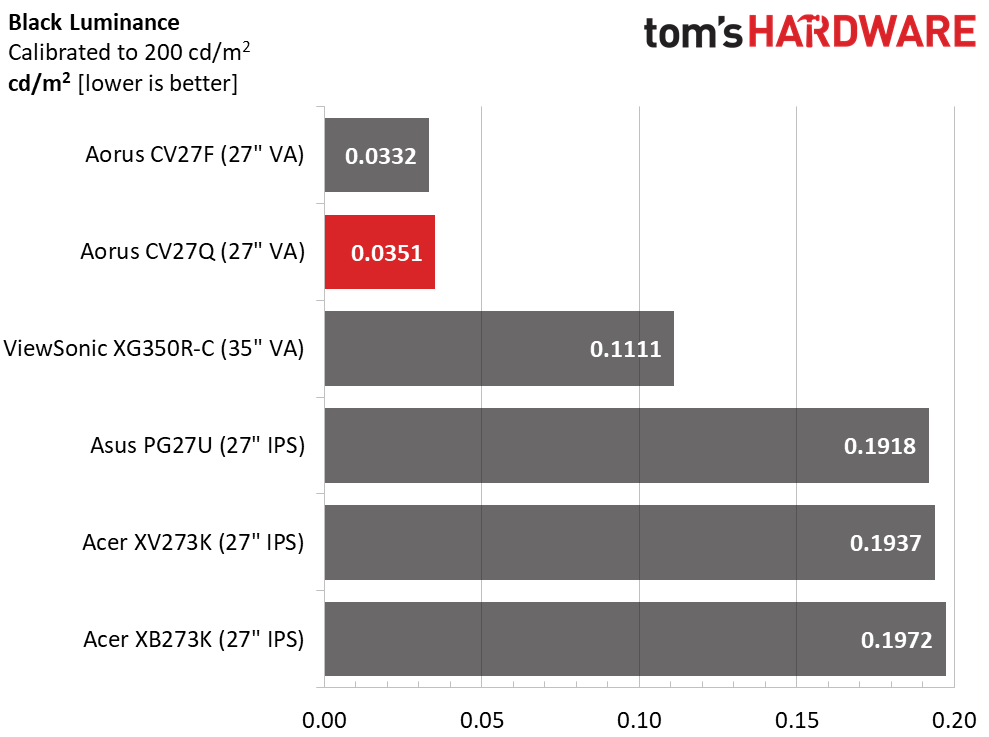
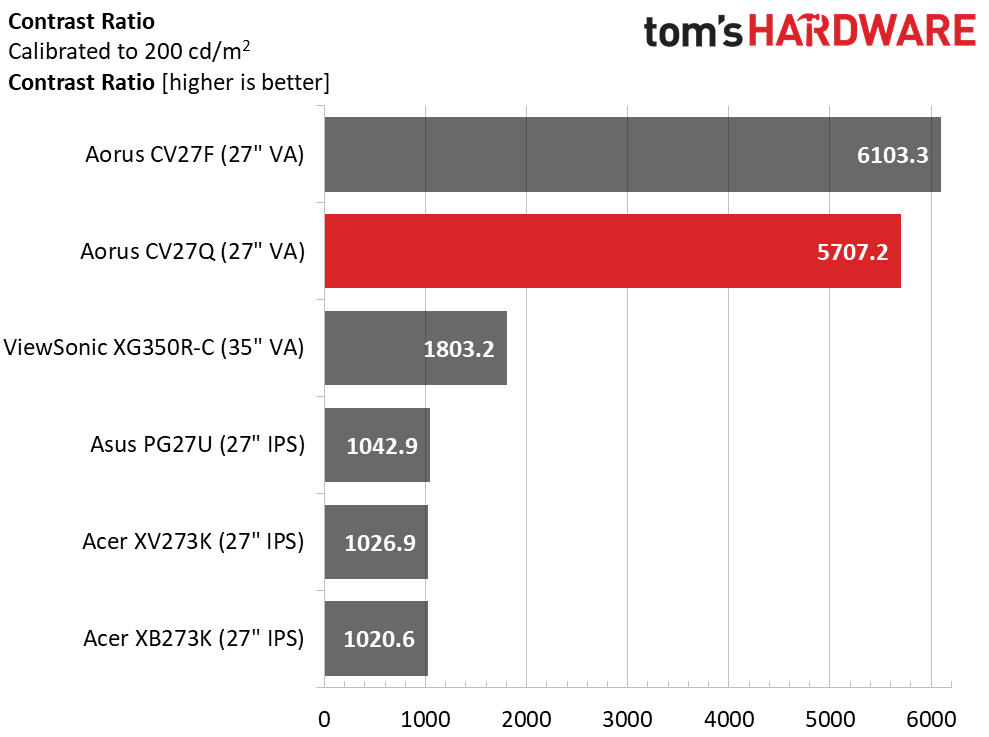
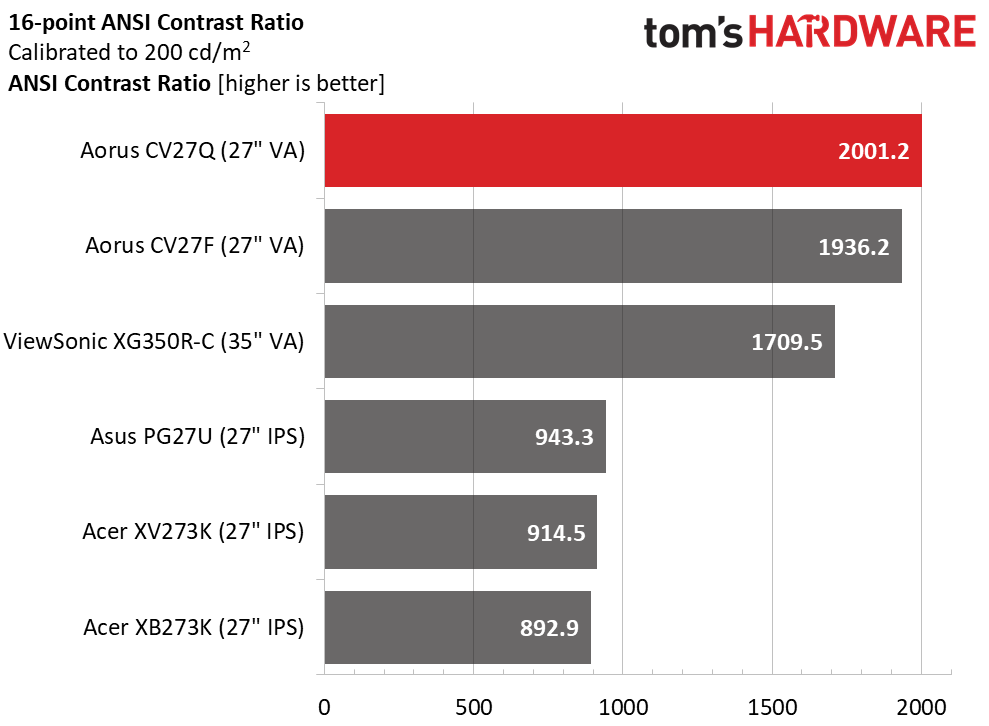
Calibration to 200 nits brightness (see our recommended settings) reduced the static contrast ratio from 7,165:1 to 5,707.2:1. But that’s still higher than expected, even for a VA panel, especially given the scores posted by the XG350R-C. 2,000-3,000:1 is the average value we’ve observed among VA displays.
The ANSI test results, an excellent 2,001.2:1, give a more real-world assessment of the CV27Q’s contrast. Our test pattern is a nine-box checkerboard that alternates between 0% and 100% brightness with an average level of 50%. This more closely represents actual content than the earlier static test, which uses full-field patterns. From this, we conclude that the CV27Q’s contrast performance is on-par with other VA-based gaming monitors.
MORE: Best Gaming Monitors
MORE: How We Test Monitors
Get Tom's Hardware's best news and in-depth reviews, straight to your inbox.
MORE: All Monitor Content
Current page: Brightness and Contrast
Prev Page Features and Specifications Next Page Grayscale, Gamma and Color
Christian Eberle is a Contributing Editor for Tom's Hardware US. He's a veteran reviewer of A/V equipment, specializing in monitors. Christian began his obsession with tech when he built his first PC in 1991, a 286 running DOS 3.0 at a blazing 12MHz. In 2006, he undertook training from the Imaging Science Foundation in video calibration and testing and thus started a passion for precise imaging that persists to this day. He is also a professional musician with a degree from the New England Conservatory as a classical bassoonist which he used to good effect as a performer with the West Point Army Band from 1987 to 2013. He enjoys watching movies and listening to high-end audio in his custom-built home theater and can be seen riding trails near his home on a race-ready ICE VTX recumbent trike. Christian enjoys the endless summer in Florida where he lives with his wife and Chihuahua and plays with orchestras around the state.